Grow Daikon Radish, and unlock a world of crisp, peppery delight right in your backyard! Have you ever dreamt of pulling a giant, snow-white radish from the earth, one that adds a satisfying crunch to your salads and a zesty kick to your stir-fries? Well, dream no more! This isn’t just about planting a seed; it’s about embarking on a rewarding journey of homegrown goodness.
The Daikon radish, with its roots stretching back centuries to the Mediterranean and East Asia, has been a staple in various cuisines for its versatility and health benefits. In Japan, it’s a symbol of good luck and often pickled or grated as a condiment. In Korean cuisine, it’s a key ingredient in kimchi. But you don’t need to travel the world to enjoy this amazing vegetable.
I know what you’re thinking: “Gardening is hard!” But trust me, growing your own Daikon radishes is surprisingly easy, even if you’re a beginner. In this DIY guide, I’m going to share my favorite tips and tricks to help you grow Daikon Radish successfully, from seed to harvest. We’ll cover everything from soil preparation and planting techniques to pest control and harvesting secrets. Imagine the satisfaction of serving a dish made with ingredients you nurtured yourself. Let’s get our hands dirty and cultivate some deliciousness!
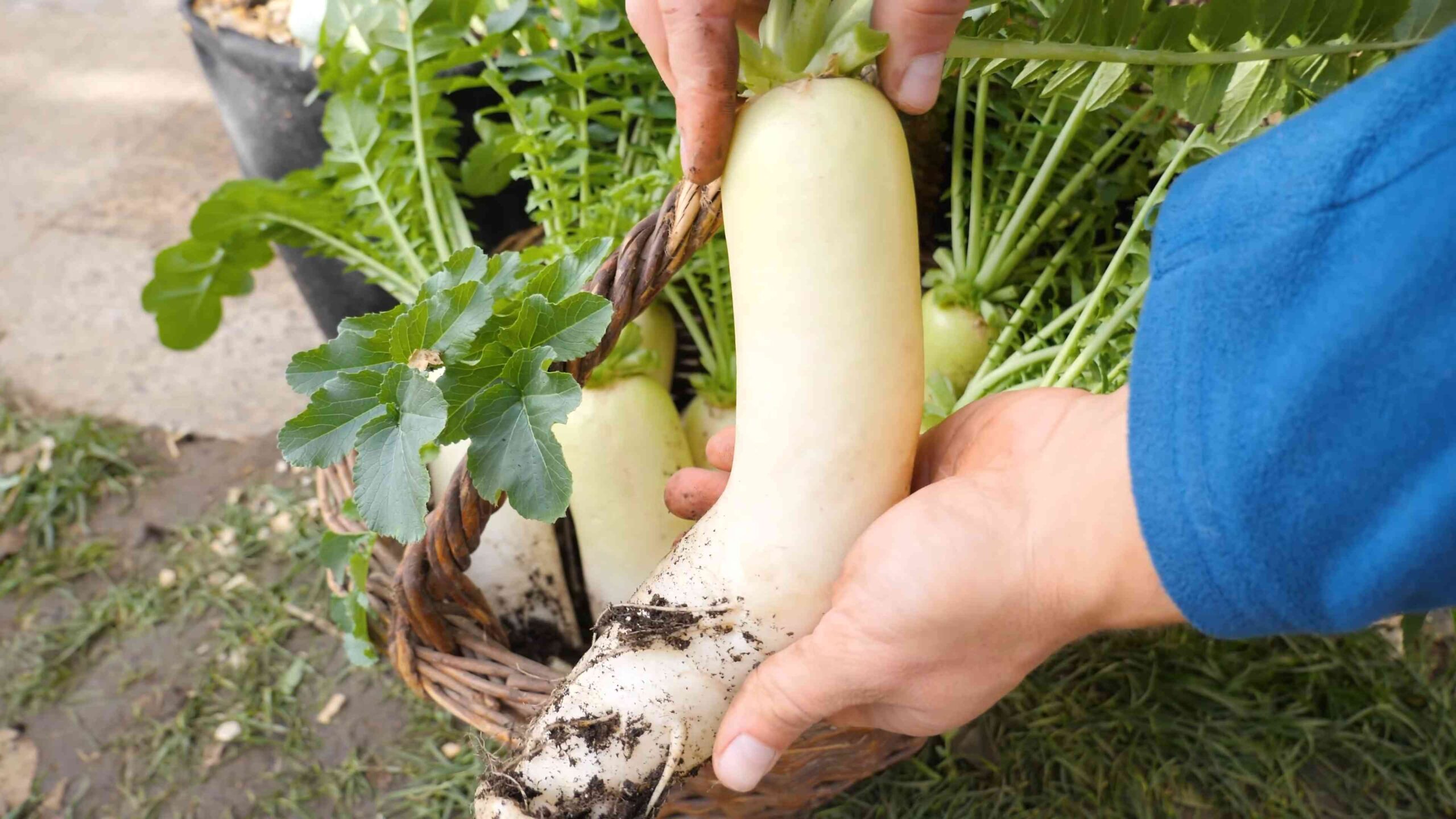
Growing Daikon Radishes: A DIY Guide From Seed to Harvest
Okay, radish lovers, let’s talk about growing daikon radishes! These aren’t your average little red radishes. Daikon are the giants of the radish world, boasting impressive size and a mild, slightly sweet flavor that’s fantastic in salads, pickles, and stir-fries. I’m going to walk you through everything you need to know to successfully grow these crunchy delights in your own backyard.
Choosing the Right Daikon Variety
First things first, let’s pick a variety. There are several daikon radish varieties available, each with slightly different characteristics. Here are a few popular choices:
- ‘Minowase’: This is a classic, long, white daikon that’s known for its excellent flavor and crisp texture. It’s a reliable choice for most climates.
- ‘April Cross’: A fast-maturing variety, perfect if you’re a bit impatient (like me!). It’s also a good option for succession planting.
- ‘Chinese White’: As the name suggests, this variety originates from China. It’s typically shorter and thicker than ‘Minowase’ and has a slightly spicier flavor.
- ‘Watermelon Radish’: Okay, this one’s a bit of a cheat, as it’s not technically a daikon, but it’s often grouped with them. It has a beautiful pink interior and a mild, slightly peppery flavor.
Consider your climate and growing season when making your choice. Some varieties are better suited to warmer or cooler temperatures.
Preparing the Soil: The Foundation for Success
Daikon radishes need loose, well-drained soil to thrive. They’re root vegetables, so compacted soil will hinder their growth and result in stunted, misshapen radishes. Here’s how to prepare your soil:
- Choose a sunny location: Daikon radishes need at least 6 hours of sunlight per day.
- Loosen the soil: Use a garden fork or tiller to loosen the soil to a depth of at least 12 inches. This is crucial!
- Amend the soil: Incorporate plenty of organic matter, such as compost or well-rotted manure. This will improve drainage, fertility, and soil structure. I usually add a generous layer – about 2-3 inches – and mix it in thoroughly.
- Check the pH: Daikon radishes prefer a slightly acidic to neutral soil pH (6.0-7.0). You can test your soil pH with a soil testing kit and amend it accordingly. If your soil is too acidic, add lime. If it’s too alkaline, add sulfur.
- Remove rocks and debris: Daikon radishes need a clear path to grow. Remove any rocks, sticks, or other debris that could obstruct their growth.
Planting Daikon Radish Seeds: Timing is Everything
Timing is crucial when planting daikon radishes. They prefer cool weather and are best planted in the late summer or early fall for a fall harvest. In warmer climates, you can also plant them in early spring for a spring harvest.
- Check your local frost dates: Daikon radishes need about 50-70 days to mature, so plan your planting accordingly. You want to plant them early enough so they have time to mature before the first frost.
- Direct sow the seeds: Daikon radishes don’t transplant well, so it’s best to direct sow the seeds into the garden.
- Sow seeds ½ inch deep and 2-3 inches apart: Use your finger or a small trowel to create shallow furrows in the soil. Sow the seeds ½ inch deep and 2-3 inches apart.
- Cover the seeds with soil and gently water: Gently water the soil to moisten it. Be careful not to wash away the seeds.
- Thin the seedlings: Once the seedlings emerge and have a few true leaves, thin them to 4-6 inches apart. This will give the radishes enough room to grow. Don’t be afraid to pull out the weaker seedlings.
Caring for Your Daikon Radishes: Water, Weed, and Watch
Once your daikon radishes are planted, it’s important to provide them with proper care to ensure a bountiful harvest.
- Water regularly: Daikon radishes need consistent moisture to grow properly. Water them deeply whenever the soil feels dry to the touch. Avoid overwatering, as this can lead to root rot. I usually aim for about an inch of water per week.
- Weed regularly: Weeds can compete with daikon radishes for nutrients and water. Keep the garden bed free of weeds by hand-pulling them or using a hoe. Be careful not to damage the radish roots when weeding.
- Fertilize sparingly: Daikon radishes don’t need a lot of fertilizer. However, you can side-dress them with a balanced fertilizer a few weeks after they emerge. Follow the instructions on the fertilizer package. I prefer using a liquid seaweed fertilizer diluted in water.
- Monitor for pests and diseases: Daikon radishes are generally pest-resistant, but they can be susceptible to certain pests, such as flea beetles and aphids. Inspect your plants regularly and take action if you notice any problems. You can use insecticidal soap or neem oil to control pests. Also, watch out for fungal diseases, especially in humid conditions. Ensure good air circulation and avoid overhead watering to minimize the risk.
Harvesting Daikon Radishes: The Moment of Truth
The moment you’ve been waiting for! Daikon radishes are typically ready to harvest in 50-70 days, depending on the variety.
- Check the size: Daikon radishes are ready to harvest when they reach the desired size. This will vary depending on the variety, but most daikon radishes are harvested when they are 12-24 inches long.
- Loosen the soil: Use a garden fork to loosen the soil around the radish. This will make it easier to pull it out of the ground.
- Gently pull the radish: Grasp the radish near the base of the leaves and gently pull it out of the ground. If it’s difficult to pull, loosen the soil further.
- Remove the leaves: Cut off the leaves, leaving about an inch of stem.
- Wash and store: Wash the radishes thoroughly and store them in the refrigerator. They will keep for several weeks. I like to wrap them in a damp paper towel and place them in a plastic bag.
Troubleshooting Common Daikon Problems
Even with the best care, you might encounter some problems when growing daikon radishes. Here are a few common issues and how to address them:
- Radishes are small and stunted: This is often caused by compacted soil or lack of nutrients. Make sure to prepare the soil properly and amend it with organic matter. You can also side-dress the plants with fertilizer.
- Radishes are split or cracked: This is usually caused by inconsistent watering. Make sure to water the plants regularly and deeply, especially during dry periods.
- Radishes are bitter: This can be caused by hot weather or lack of water. Daikon radishes prefer cool weather and consistent moisture.
- Pests and diseases: As mentioned earlier, monitor for pests and diseases and take action if you notice any problems.
Using Your Daikon Harvest: From Garden to Table
Now that you’ve harvested your daikon radishes, it’s time to enjoy them! Daikon radishes are incredibly versatile and can be used in a variety of dishes.
- Salads: Grate or thinly slice daikon radishes and add them to salads for a crunchy and slightly spicy flavor.
- Pickles: Daikon radishes are a popular ingredient in pickles, such as kimchi and Japanese pickles.
- Stir-fries: Add sliced or diced daikon radishes to stir-fries for a mild, slightly sweet flavor.
- Soups and stews: Daikon radishes can be added to soups and stews for a subtle flavor and texture.
- Roasted: Roast daikon radishes with other root vegetables for a sweet and savory side dish.
- Raw: Enjoy daikon radishes raw as a snack or appetizer. They can be dipped in hummus or other dips.
I personally love making a simple daikon radish salad with a light vinaigrette. It’s refreshing and delicious!
Succession Planting for a Continuous Harvest
To enjoy a continuous harvest of daikon radishes, consider succession planting. This involves planting a new batch of seeds every few weeks. This way, you’ll have
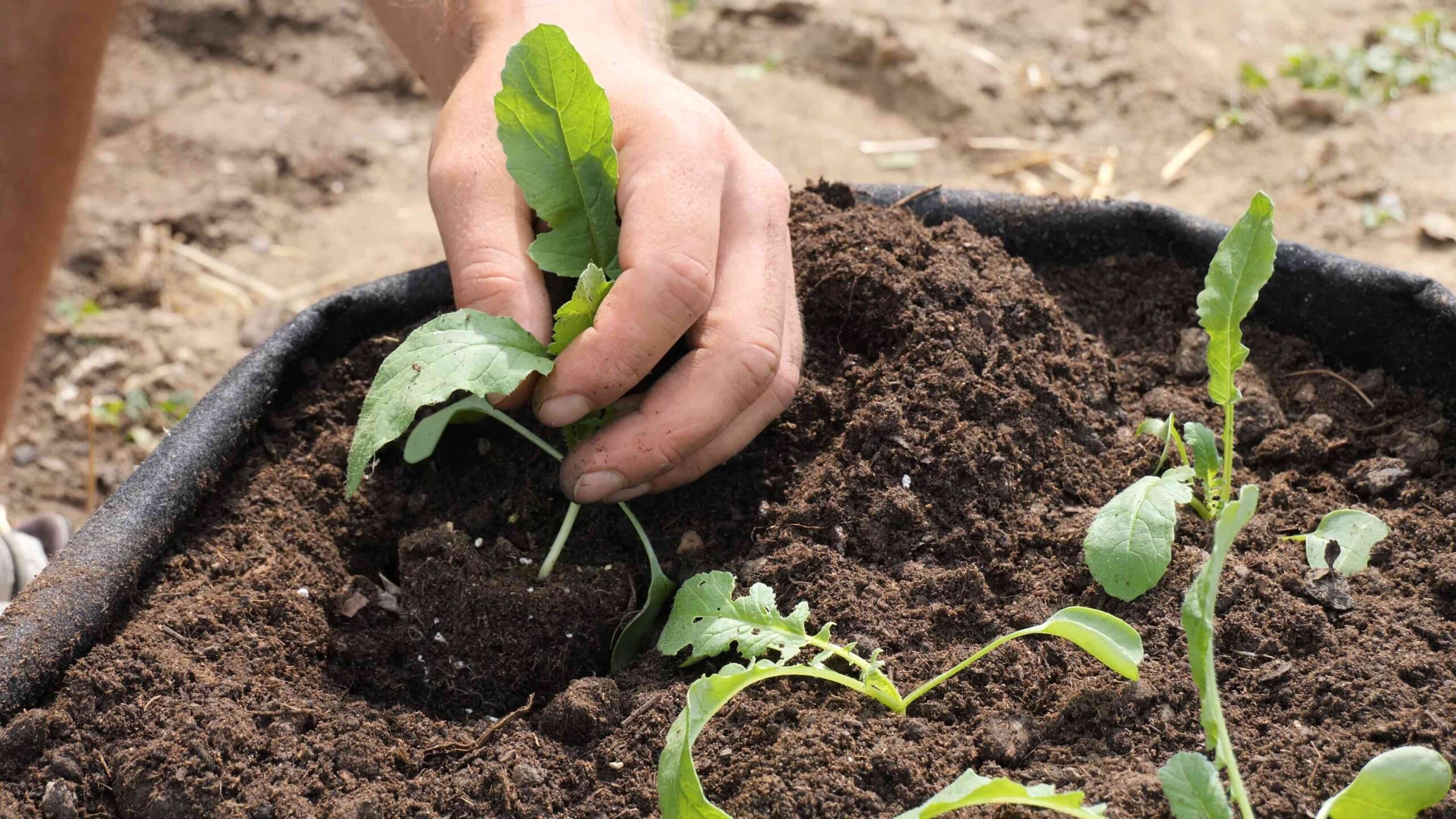
Conclusion
So, there you have it! Growing your own Daikon Radish is not only achievable, but it’s also incredibly rewarding. From the crisp, peppery bite in your salads to the satisfying crunch in your stir-fries, the flavor of homegrown Daikon is simply unmatched. Forget the bland, often woody radishes you find in the supermarket – this is about experiencing the true potential of this versatile root vegetable.
Why is this DIY trick a must-try? Because it puts you in control. You control the soil, the watering, and the overall environment, resulting in a Daikon Radish that is bursting with flavor and nutrients. You’ll avoid the pesticides and herbicides often used in commercial farming, ensuring a healthier and more sustainable food source for you and your family. Plus, let’s be honest, there’s a certain satisfaction that comes from nurturing something from seed to table. It’s a connection to nature that’s often missing in our modern lives.
But the benefits don’t stop there. Growing your own Daikon Radish is also a fantastic way to save money. Packets of seeds are inexpensive, and with proper care, you can harvest a bountiful crop that will last for weeks. Think of all the delicious dishes you can create!
Ready to take your Daikon Radish game to the next level? Consider these variations and suggestions:
* Succession Planting: Plant seeds every few weeks to ensure a continuous harvest throughout the growing season. This way, you’ll always have fresh Daikon on hand.
* Companion Planting: Plant Daikon Radish alongside carrots, lettuce, or spinach. These plants can help deter pests and improve soil health.
* Soil Amendments: Incorporate compost or well-rotted manure into the soil before planting to provide essential nutrients.
* Container Gardening: If you don’t have a garden, don’t worry! Daikon Radish can also be grown in large containers. Just make sure the container is at least 12 inches deep to accommodate the long roots.
* Pickling: Preserve your harvest by pickling your Daikon Radish. This is a great way to enjoy the flavor of Daikon long after the growing season is over.
* Roasting: Roasting Daikon Radish brings out its natural sweetness. Toss it with olive oil, herbs, and spices for a delicious and healthy side dish.
We truly believe that anyone can successfully grow their own Daikon Radish, regardless of their gardening experience. It’s a simple, rewarding, and delicious way to connect with nature and enjoy fresh, healthy food.
So, what are you waiting for? Grab a packet of seeds, prepare your soil, and get planting! We’re confident that you’ll be amazed by the results. And most importantly, we want to hear about your experience. Share your photos, tips, and stories in the comments below. Let’s build a community of Daikon Radish enthusiasts and inspire others to grow their own food. Happy gardening!
FAQ
Frequently Asked Questions About Growing Daikon Radish
What is the best time of year to plant Daikon Radish?
The best time to plant Daikon Radish depends on your climate. In general, it’s best to plant them in the late summer or early fall for a fall or winter harvest. This is because Daikon Radish prefers cooler temperatures and shorter days. Planting in the spring can result in bolting (premature flowering), which can make the roots tough and bitter. However, in regions with mild winters, you can also plant Daikon Radish in the early spring for a spring harvest. Check your local climate and planting guides for specific recommendations.
How much sunlight does Daikon Radish need?
Daikon Radish needs at least 6 hours of sunlight per day to thrive. Choose a location in your garden that receives full sun for the best results. If you’re growing Daikon Radish in containers, make sure to place them in a sunny spot. Insufficient sunlight can lead to stunted growth and smaller roots.
What kind of soil is best for growing Daikon Radish?
Daikon Radish prefers loose, well-drained soil that is rich in organic matter. Heavy clay soil can restrict root growth and lead to misshapen radishes. Before planting, amend the soil with compost or well-rotted manure to improve drainage and fertility. A slightly acidic to neutral soil pH (6.0-7.0) is ideal. You can test your soil pH with a home testing kit or send a sample to your local agricultural extension office.
How often should I water Daikon Radish?
Daikon Radish needs consistent moisture to grow properly. Water deeply and regularly, especially during dry periods. Aim to keep the soil consistently moist but not waterlogged. Overwatering can lead to root rot, while underwatering can cause the roots to become tough and bitter. A good rule of thumb is to water when the top inch of soil feels dry to the touch.
How long does it take for Daikon Radish to mature?
Daikon Radish typically matures in 50-70 days, depending on the variety and growing conditions. Check the seed packet for specific information on the maturity time of your chosen variety. You can harvest Daikon Radish when the roots reach the desired size. Gently loosen the soil around the radish and pull it out of the ground.
What are some common pests and diseases that affect Daikon Radish?
Some common pests that can affect Daikon Radish include flea beetles, aphids, and root maggots. Flea beetles can chew small holes in the leaves, while aphids can suck the sap from the plants. Root maggots can tunnel into the roots, causing damage and decay. To control these pests, you can use insecticidal soap, neem oil, or row covers. Common diseases that can affect Daikon Radish include clubroot and downy mildew. Clubroot is a soilborne disease that causes swollen and distorted roots. Downy mildew is a fungal disease that causes yellow spots on the leaves. To prevent these diseases, practice crop rotation, ensure good drainage, and avoid overhead watering.
Can I eat the greens of Daikon Radish?
Yes, the greens of Daikon Radish are edible and nutritious. They have a slightly peppery flavor similar to the roots. You can use them in salads, stir-fries, or soups. Harvest the greens when they are young and tender for the best flavor.
How do I store Daikon Radish after harvesting?
To store Daikon Radish, remove the greens and wash the roots thoroughly. Wrap the radishes in a damp paper towel and store them in a plastic bag in the refrigerator. They should last for several weeks. You can also store Daikon Radish in a root cellar or a cool, dark place.
My Daikon Radishes are splitting. What could be the cause?
Splitting in Daikon Radishes is often caused by inconsistent watering. Periods of drought followed by heavy watering can cause the roots to swell rapidly, leading to splitting. To prevent this, ensure consistent moisture levels throughout the growing season. Mulching around the plants can also help to retain moisture in the soil.
Can I grow Daikon Radish in raised beds?
Yes, Daikon Radish grows very well in raised beds. Raised beds provide excellent drainage and allow you to control the soil composition. Make sure the raised bed is deep enough (at least 12 inches) to accommodate the long roots of the Daikon Radish.
We hope these FAQs have answered your questions about growing Daikon Radish. Remember to experiment and adapt these tips to your specific growing conditions. Happy gardening!


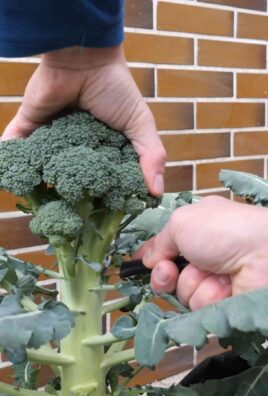
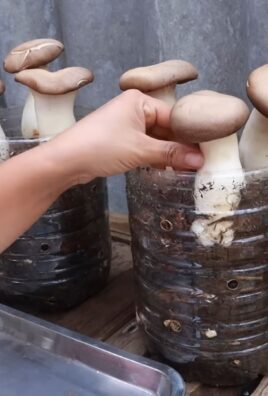
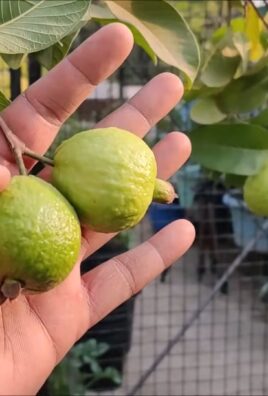
Leave a Comment